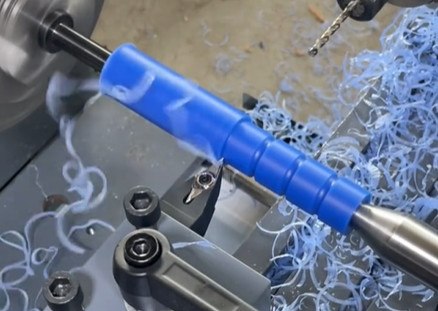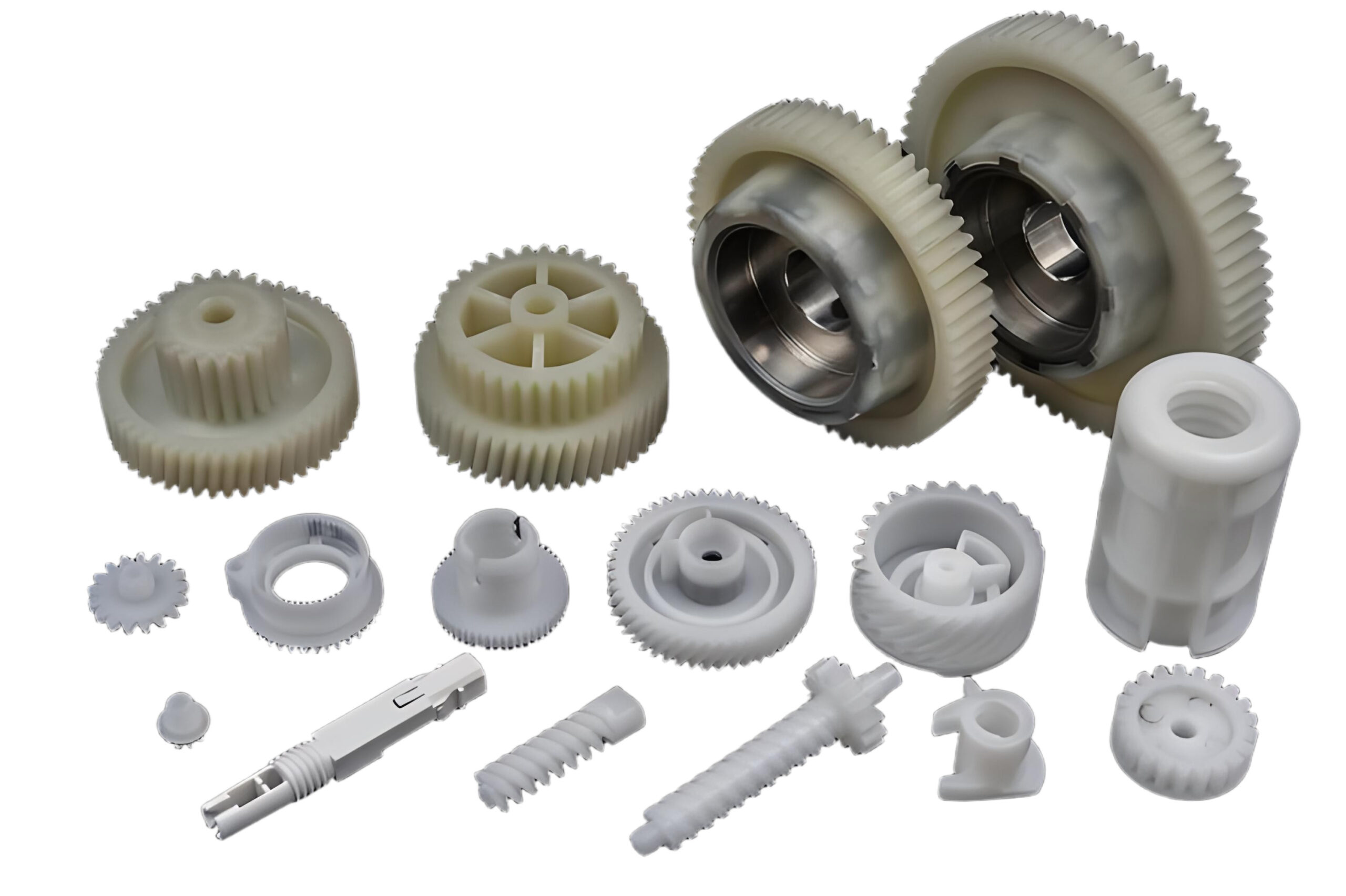Nylon, a versatile polyamide thermoplastic, is widely used in industries such as automotive, aerospace, and electronics due to its strength, durability, and chemical resistance. Machining nylon requires understanding its material properties, selecting appropriate tools, and optimizing cutting parameters to achieve precise, high-quality parts. This guide provides a detailed overview of nylon types, machining techniques, specific parameters, and common difficulties encountered during the process. It is designed for machinists, engineers, and manufacturers seeking to enhance efficiency and accuracy in nylon machining.
Understanding Nylon and Its Properties
Nylon, or polyamide (PA), is a semi-crystalline thermoplastic known for its high strength, toughness, and resistance to wear and chemicals. Its mechanical properties, such as a tensile strength of 80-95 MPa for common grades, make it suitable for components like gears, bearings, and bushings. However, nylon’s hygroscopic nature, thermal sensitivity, and flexibility pose unique challenges during machining. The two most commonly machined nylon types are PA6 and PA66, with variants like glass-filled nylon (e.g., PA66-GF30) used for enhanced strength.
Nylon’s key properties influencing machinability include:
- High Strength-to-Weight Ratio: Allows lightweight yet durable parts.
- Chemical Resistance: Resists oils, solvents, and chemicals, ideal for harsh environments.
- Hygroscopicity: Absorbs moisture (up to 2.5% for PA6), affecting dimensional stability.
- Thermal Expansion: Coefficient of 80-100 x 10⁻⁶/°C, leading to dimensional changes with temperature.
- Low Melting Point: PA6 melts at ~220°C, PA66 at ~260°C, requiring careful heat management.
These properties necessitate specific machining strategies to maintain precision and avoid defects like warping or melting.

Common Types of Nylon for Machining
Different nylon grades offer unique characteristics, making them suitable for specific applications. Below is a detailed look at the most commonly machined nylon types, their properties, and typical uses.
| Nylon Type | Properties | Applications |
|---|---|---|
| PA6 | Tensile strength: 80 MPa, elongation at break: 50%, water absorption: 2.5%, good impact resistance, slightly flexible | Pulleys, guide rails, structural parts |
| PA66 | Tensile strength: 85-95 MPa, heat deflection temperature: 250°C (0.45 MPa), lower water absorption: 1.5% | Gears, fasteners, connectors |
| PA12 | Lower water absorption: 0.7%, high flexibility, good chemical resistance | Flexible components, tubing, fittings |
| Glass-Filled Nylon (e.g., PA66-GF30) | Enhanced tensile strength: 120-150 MPa, increased rigidity, abrasive to tools | High-wear parts, bearings, structural components |
Choosing the appropriate nylon type depends on the part’s mechanical requirements, environmental conditions, and machining constraints. PA6 is preferred for applications requiring impact resistance, while PA66 is chosen for higher strength and thermal stability. Glass-filled variants are used when rigidity is critical but increase tool wear due to their abrasive nature.
Machining Techniques for Nylon
Nylon is machined using CNC processes such as turning, milling, and drilling. Each technique requires specific considerations to optimize performance and avoid issues like melting or poor surface finish.
Turning
Turning nylon involves rotating the workpiece against a single-point cutting tool. Key parameters include:
- Spindle Speed: 1000-2000 RPM for PA6/PA66, lower for glass-filled nylon (800-1200 RPM) to reduce heat.
- Feed Rate: 0.002-0.008 inches per revolution (IPR) for smooth finishes.
- Depth of Cut: 0.020-0.050 inches to balance material removal and heat generation.
- Tool Material: High-speed steel (HSS) or carbide with sharp edges and 10-15° rake angles.
Sharp tools and moderate speeds prevent stringy chips and melting, ensuring a clean cut.
Milling
Milling uses a rotating multi-point cutting tool to remove material. Climb milling is preferred to reduce chatter and improve surface finish. Recommended parameters:
- Cutting Speed: 600-1200 surface feet per minute (SFM).
- Feed Rate: 0.002-0.010 IPR, adjusted based on tool diameter and material grade.
- Tool Geometry: Positive rake angles (5-10°) to minimize material deflection.
- Fixturing: Secure clamping or vacuum chucking to prevent vibration without deforming the workpiece.
Proper fixturing and chip evacuation are critical to avoid re-cutting chips, which can degrade surface quality.
Drilling
Drilling nylon requires careful control to prevent melting or chip clogging. Parameters include:
- Spindle Speed: 500-1000 RPM for standard nylon, lower for glass-filled grades.
- Feed Rate: 0.005-0.007 IPR to avoid excessive heat.
- Drill Design: Use drills with high relief angles (12-15°) and polished flutes for efficient chip removal.
- Coolant: Compressed air or mist coolant to manage heat without affecting material properties.
Effective chip removal systems, such as vacuum systems, prevent clogging and maintain hole quality.
Difficulties in Nylon Machining
While nylon is machinable, its properties present specific difficulties that require careful management to achieve high-quality results. Below are the primary issues encountered during machining.
Moisture Absorption and Dimensional Stability
Nylon’s hygroscopic nature causes it to absorb moisture, leading to dimensional changes. For example, PA6 can expand by 0.3% when wet. To mitigate this:
- Dry nylon at 80°C for 8-12 hours before machining to reduce moisture content below 0.2%.
- Store parts in controlled environments to maintain dimensional stability.
- Use annealing (90-100°C for 2 hours) to relieve internal stresses in molded blanks.
Failure to address moisture absorption can result in parts that deviate from tolerances post-machining.
Heat Sensitivity and Melting
Nylon’s low melting point makes it prone to melting or deformation during machining. Excessive heat (above 150°C at the cutting edge) can cause poor surface finish or dimensional inaccuracies. Strategies to manage heat include:
- Use lower spindle speeds and feed rates to minimize heat buildup.
- Employ sharp tools to reduce cutting forces and friction.
- Apply air or mist coolant, avoiding water-based coolants that nylon may absorb.
Monitoring tool temperature and using adaptive toolpaths can further prevent thermal damage.
Stringy Chips and Chip Management
Nylon tends to produce long, stringy chips that can wrap around tools or clog flutes, especially during drilling or turning. To address this:
- Use sharp tools with high rake angles to produce shorter, more manageable chips.
- Implement vacuum or compressed air systems for chip evacuation.
- Adjust feed rates (e.g., 1 mm/rev for roughing) to control chip formation.
Effective chip management improves surface quality and reduces tool wear.
Tool Wear with Glass-Filled Nylon
Glass-filled nylon, such as PA66-GF30, is abrasive and accelerates tool wear. Carbide tools are recommended over HSS for durability, and cutting speeds should be reduced (e.g., 500-800 SFM) to extend tool life. Regular tool inspection and replacement are essential to maintain precision.
Best Practices for Nylon Machining
To achieve optimal results, machinists should follow these best practices:
- Material Preparation: Dry nylon thoroughly and anneal molded parts to minimize stress and moisture-related issues.
- Tool Selection: Use sharp HSS or carbide tools with positive rake angles and polished surfaces to reduce friction.
- Cutting Parameters: Optimize spindle speeds, feed rates, and depths of cut based on nylon type and operation (see table below).
- Cooling: Use compressed air or mist coolant to manage heat without affecting material properties.
- Fixturing: Secure workpieces with clamping or vacuum chucking to prevent vibration, avoiding excessive pressure that could deform the material.
- Finishing: Perform light final passes and use deburring, sanding, or polishing to achieve smooth surfaces, avoiding fraying.
| Operation | Nylon Type | Spindle Speed (RPM) | Feed Rate (IPR) | Depth of Cut (in) |
|---|---|---|---|---|
| Turning | PA6/PA66 | 1000-2000 | 0.002-0.008 | 0.020-0.050 |
| Milling | PA6/PA66 | 600-1200 (SFM) | 0.002-0.010 | 0.010-0.030 |
| Drilling | PA6/PA66 | 500-1000 | 0.005-0.007 | 0.010-0.020 |
| Turning | Glass-Filled | 800-1200 | 0.002-0.006 | 0.015-0.030 |
Applications of Machined Nylon Parts
Machined nylon parts are used across industries due to their durability and versatility. Common applications include:
- Automotive: Gears, bushings, and intake manifolds for lightweight, durable components.
- Aerospace: Bearings, wear pads, and insulators for high-performance parts.
- Electronics: Connectors and insulators due to nylon’s electrical properties.
- Industrial: Pulleys, guide rails, and structural components for machinery.
Nylon’s ability to replace metal parts reduces weight and maintenance costs, making it a cost-effective choice for precision manufacturing.
Conclusion
Machining nylon requires a thorough understanding of its material properties, careful selection of tools and parameters, and strategies to address difficulties like moisture absorption, heat sensitivity, and chip management. By choosing the appropriate nylon type (e.g., PA6, PA66, or glass-filled variants), optimizing cutting conditions, and implementing best practices, machinists can produce high-quality, precise parts for diverse applications. This guide provides a systematic approach to nylon machining, ensuring efficiency and reliability in manufacturing processes.
FAQ About Nylon
What is nylon?
Nylon is a family of synthetic polymers known as polyamides, first developed in the 1930s. It is a versatile material valued for its strength, durability, and flexibility, and is widely used in both industrial and consumer products. Nylon can be molded, extruded, or machined into various forms, including fibers, films, rods, sheets, and complex parts.
What are the main types of nylon?
PA6 (Polyamide 6): A widely used grade with good balance of strength, toughness, and wear resistance. It has moderate moisture absorption and is often used in mechanical parts and textiles.
PA66 (Polyamide 66): Offers higher tensile strength, heat resistance, and rigidity than PA6, making it suitable for high-stress applications like automotive components and industrial fasteners.
PA12 (Polyamide 12): Has lower moisture absorption and better chemical resistance than PA6 and PA66. It is often used in precision parts for medical devices, aerospace, and fuel systems.
Glass-filled nylon: Reinforced with glass fibers (e.g., PA6 GF30, which contains 30% glass fiber) to enhance stiffness, dimensional stability, and heat resistance.
Mineral-filled nylon: Filled with minerals to improve hardness and reduce cost, commonly used in non-structural parts.
How does nylon compare to other plastics like polyethylene (PE) or polypropylene (PP)?
Strength: Nylon has higher tensile strength and wear resistance than PE or PP, making it better for load-bearing applications.
Heat resistance: Nylon can withstand higher temperatures (up to 150°C for PA66) compared to PE (around 80–120°C) or PP (around 100–130°C).
Hygroscopicity: Unlike PE/PP (non-hygroscopic), nylon absorbs moisture, which affects dimensional stability.
Cost: Nylon is generally more expensive than PE or PP but offers superior performance in demanding applications.
What are the limitations of nylon?
Moisture sensitivity: Absorbs water, leading to dimensional changes and reduced rigidity in wet conditions.
UV degradation: Prolonged exposure to sunlight can cause nylon to become brittle over time (additives can improve UV resistance).
Chemical limitations: Not resistant to strong acids, phenols, or some organic solvents.
High-temperature weakness: Above its melting point (around 215–260°C, depending on the type), nylon loses structural integrity.
